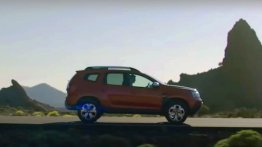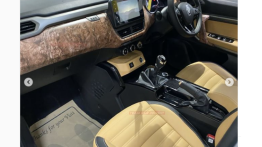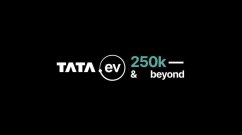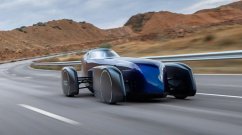Renault India is introducing an automatic transmission for the Scala. We spent a day driving the car nearly 350km from Mumbai to Kashid and back. What do we think about the Scala AT?
How do I know that this Renault Scala has an automatic transmission?
From the outside, its very easy to miss it. You’ll have to look closely at the rear of the car for the ‘CVT’ badging on the boot lip. That's as far as the exterior differences go.
And the obvious differences once I step inside the car are...
The first being the gear-lever. It’s an automatic and hence the ‘P-R-N-D-L’ (duh!), then the driver’s side foot well which misses out on the clutch (obvious again isn’t it?). The instrument console has a small space displaying which driving mode you’re in. Otherwise, its the same as a normal Nissan Sunny. Oh I beg your pardon, I meant Renault Scala!
Brilliant. I’ve fancied a diesel automatic sedan and now...
Not so fast. Renault has launched the automatic transmission only on the petrol variant of the Scala. You can get it in the RxL and RxZ trims only. The engine is the same 1.5-liter petrol at 99PS and 134Nm of torque. While an official figure was not given, we were told the weight increase from the manual is minimum.
And what's the X-Tronic CVT technology? Is it like X-Men for cars?
CVT stands for Continuously Variable Transmission. Basically two tapered rotating pulleys with a belt connecting them. By moving the belt through the tapered regions of the pulley, the output speed increases/decreases. As a result there are infinite gear ratios in a CVT. The X-Tronic is the new age CVT developed by Nissan. The belt used to connect the pulleys is made of steel for greater durability.
But I've driven a CVT where I could switch gears using the paddles or the gear stick...
Some of the cars have points on the tapered pulleys that correspond to specific gear ratios. When you leave it in D, the belt keeps shifting through the pulleys providing the ideal output speed. When you take manual control, the belt moves to that specific point of the pulley and stays there until you change the gear using the paddle/shifter.
The Renault Scala AT however, does not come with such a manual override. You've no such manual control. You do get a Low mode for hill climbs or inclines.
So how is it like to drive?
The first impression you get is that this gearbox does not suit this engine.
We started driving on the highway first and I was disappointed with the gearbox. Leave it in ‘D’ and gently put your foot down on the accelerator, and the CVT struggles to move the car. You’ll now try to floor it to get past that huge 18-wheeler truck, but doing so only aggravates things further. By putting your foot down, two things happen: The rev counter shoots to the redline at 6,500rpm, and there is a lot of noise accompanying it. The expected third thing - the car actually accelerating - does not happen. Even under full throttle, the Scala AT struggles to move forward. Overtaking has to be planned and charted. Moving from speeds as low as 50km/h to 90km/h takes its own sweet time.
As I said before, there is no manual override in the Scala AT. However, there is a button on the gearstick which activates the ‘Sport’ mode. Renault says this mode will give you a surge of torque. It gave me a surge of extra, unnecessary noise!
Finally, you resort to the Low mode (the L) which is actually for hill climbs at slow speeds. By slotting the Scala AT to ‘L’, the progression certainly improves but the noise becomes unbearable.
Inside city limits, the Scala AT feels pretty much like a scooter that you learned riding in, when it comes to the manner in which it picks up speed. Try keeping it below 3,000rpm and the noise is subdued. In city speeds, the gearbox feels very smooth but the car feels very slow. Accelerating from 0-60km/h in a relaxed manner (not going past 3,000rpm) takes exactly as long as it would in a 110cc scooter. In the end, you try to nudge the accelerator just a bit. Even doing so, the CVT goes into its ‘I’m a rockstar’ mode with the noise and the exhaust note cannot be termed ‘sporty’ either.
The rubberband effect traditionally associated with CVT’s is even more pronounced in the Scala AT. As I said before, this gearbox for this engine is not a match made in heaven.
All right, from what little technology I know, automatics are supposed to have lesser fuel efficiency than the manuals right?
Not on the Scala. The ARAI ratings stand at 17.97 km/l for the Scala AT while the manual does 16.95 km/l.
How much did it actually return?
It averaged 9km/l. But in the Scala AT’s defence, it had four passengers who were using the AC to the max, a decent bit of luggage and some spirited (yet necessary) driving. I think if you try driving carefully, the Scala AT should be good for 12-13km/l in the city itself which is impressive for a petrol automatic.
What's the price increase?
Renault India haven’t exactly confirmed the price. We were told it was not going to be cheap though. We expect them to charge a premium of at least INR 1 lakh for the added convenience. So that means a base Scala AT could set you back by INR 8.9 lakhs (ex-Showroom, Delhi). A 4-year/80,000km warranty comes standard.
Would you buy it?
Not very sure. A simple reason? In anticipation that it could be more convenient than a manual, I was left with the impression that it is not worth paying the extra due to its sluggish nature and noisy engine.
You said the competition was better. How?
I’m going to consider the automatic variants of the Ford Fiesta and the Honda City. The Fiesta has the most advanced automatic transmission in this group - the 6-speed Dual Clutch. Ford is also offering a 10-year maintenance free warranty which is excellent on this fun-to-drive car.
The City has a 5-speed auto with paddle shifts. The most important aspect being that you can play F1 driver and it is quite fun!
And a more complicated reason?
Whats the one thing that works in favor of the Nissan Sunny/Renault Scala? That amazing rear seat. So why would I buy a Scala knowing that I’m going to hire a driver/chauffeur to drive me about, and give him the benefit of an automatic transmission?
In short, I was left with the feeling that the AT variant contradicts the USP of the Scala. However there maybe customers who use their car mostly in the city and travel in the company of well-built occupants.
To sum up the Renault Scala AT -
What I like about the Scala AT:
- CVT is jerk-free
- Fuel efficiency is impressive for a petrol automatic
- It is available on the top-end model with all the bells and whistles
- Its got the best rear seat experience in its segment
What I did not like about the Scala AT:
- It shouldn’t be this noisy
- CVT gearbox does not cooperate with the engine and this reflects on the sluggishness of the car
- Automatic variant a bit puzzling on a ‘back-seat experience chauffeur driven’ car in this segment




















